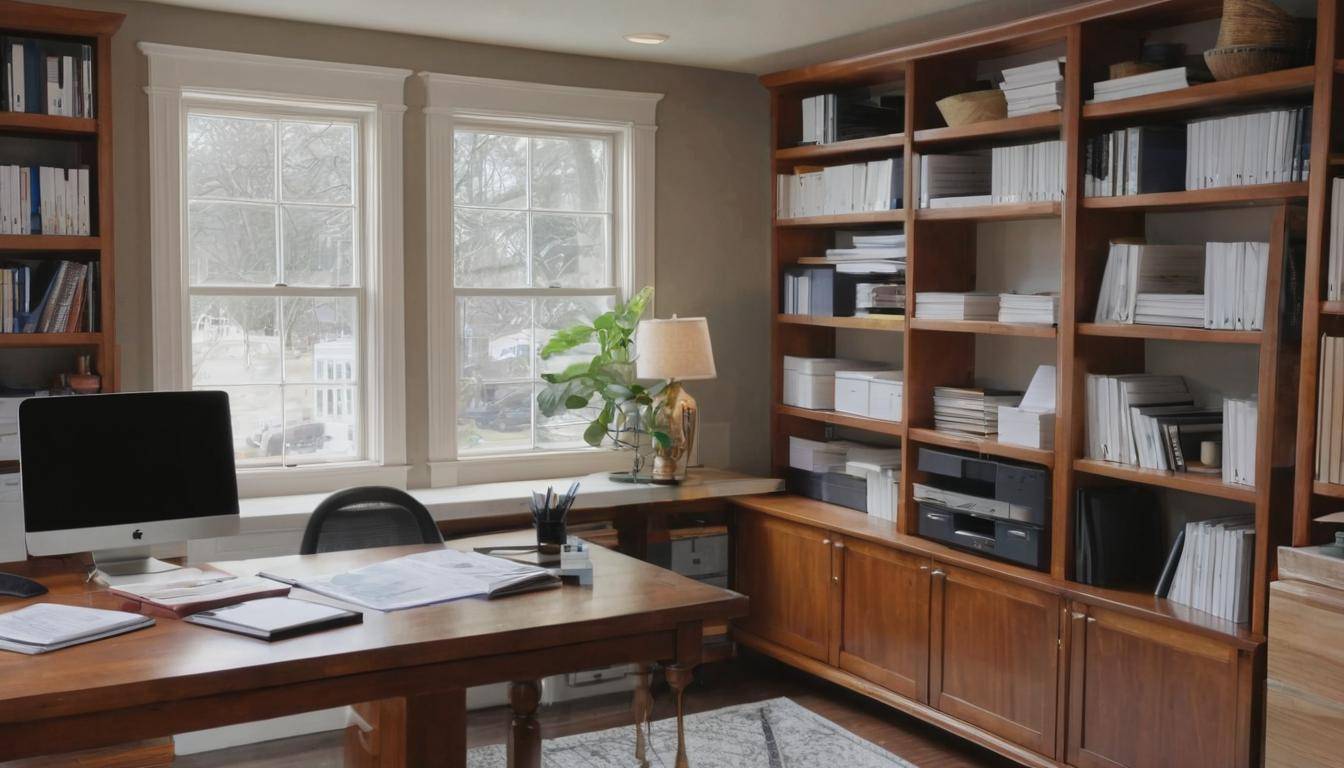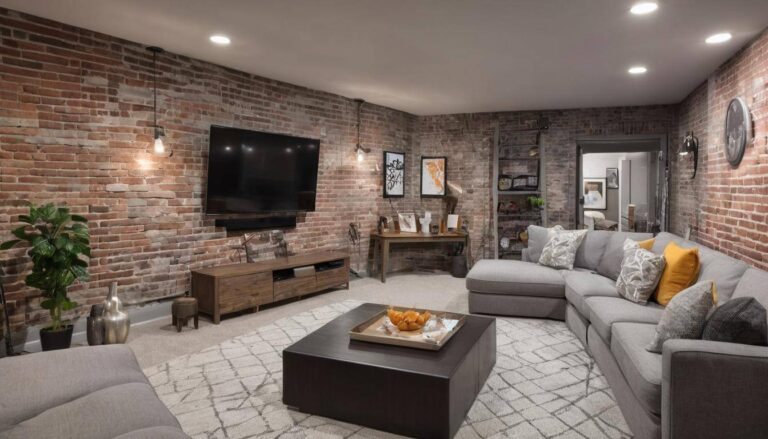Home Renovation Mistakes to Avoid for Success
One of the most critical mistakes to avoid during a home renovation is inadequate planning and budgeting. Another common mistake is hiring the wrong contractor without doing thorough research first. Additionally, overlooking small details such as paint color and lighting can have a significant impact on the outcome of the renovation.
Taking on a home renovation is no small task. From small changes to major overhauls, the possibility of home renovation mistakes looms large, potentially leading to costly setbacks or even reducing your home’s value. Imagine modern fixtures disrupting the charm of an old Victorian house—such missteps can cause more harm than good. Statistics show that nearly half of homeowners are unhappy with their DIY attempts due to unexpected challenges and increased costs.
Proper planning holds the key to a smooth renovation process. Visualizing every detail using tools like CAD software can help avoid mid-project changes that drive up expenses. Additionally, understanding and securing necessary permits upfront prevents work stoppages and fines later on. As you prepare to transform your living space, recognizing these home renovation mistakes to avoid will empower you to make informed decisions right from the start.

Common Home Renovation Mistakes
One of the most significant mistakes homeowners make during renovations is neglecting the original architectural style of their home. Each home possesses its unique character, and trying to impose modern elements onto a traditional structure can result in an inconsistent and jarring appearance. For instance, incorporating sleek, minimalist designs into a classic Victorian home might clash and diminish its aesthetic appeal. Furthermore, this oversight could reduce the resale value of the property as prospective buyers are often drawn to homes with cohesive architectural styles.
To prevent this pitfall, it’s vital to respect and preserve the original style of your home while making upgrades. Before implementing any changes, take the time to understand the architecture and design principles that influence your home’s original style. By doing so, you can integrate new features that complement the existing structure rather than clash with it. A harmonious blend of old and new can enhance both the aesthetic appeal and market value of your property.
Another common pitfall is underestimating the scope of do-it-yourself (DIY) projects. While DIY renovations can be rewarding, taking on too many tasks without professional help can lead to incomplete or subpar results. In fact, statistics show that 43% of homeowners end up regretting their DIY attempts due to unsatisfactory outcomes or unexpected costs incurred when professionals need to be called in later.
When considering DIY projects, it’s essential to realistically assess your skill level and the complexity of each task. While simple cosmetic upgrades like painting or installing shelves may be suitable for DIY, complex structural changes, electrical work, or plumbing should be entrusted to experienced professionals. By accurately gauging your capabilities and seeking professional assistance when needed, you can avoid potential setbacks and ensure high-quality results in your renovation endeavors.
In essence, by respecting the original style of your home and carefully evaluating the scope of DIY projects, you can sidestep common renovation pitfalls and set yourself up for a successful and satisfying home transformation.
The path to a seamless home renovation journey begins with meticulous preparation steps that lay a strong foundation for a successful project.
Overlooking Preparation Steps
When it comes to renovating your home, thorough planning is crucial. It’s like preparing for a big event—you need to have everything in place before the action starts. One of the most important aspects of home renovation is detailing out the changes you want to make. You might think a change sounds simple, but there are so many little things to consider. For example, if you’re considering knocking down a wall, you have to ensure it’s not holding up the roof! Using Computer-Aided Design (CAD) software to visualize changes is key, as it helps prevent costly mistakes or adjustments mid-project.
For a significant project like a home renovation, detailed planning ensures that everyone involved knows what’s going on and what they are supposed to do. It also helps you be prepared in case anything doesn’t go as planned. Visualizing the changes through CAD software provides an accurate idea of how your renovated space will look and function, helping you avoid last-minute changes that can throw off your budget and timeline.
Imagine this planning stage as creating a blueprint before building something—a vital step to make sure everything fits where it should. If you’re renovating your kitchen, it’s important to have a clear idea of where the new appliances or cabinets will go, which walls will be knocked down, and how much space is available.
Securing Necessary Permits
The next step after detailed planning involves securing permits. Sometimes we forget about this part because we are so focused on our vision for the new space.
Making structural changes, updating electrical systems, or revamping plumbing all require approval from local authorities. Lack of necessary permits can halt work and result in fines, causing unnecessary delays and added expenses. Remember, these permits ensure that the work being done meets safety and building standards.
Obtaining permits isn’t just about following the rules; it’s also about ensuring that the renovations are done safely and correctly. It’s like getting a builder’s manual for your project that states specific criteria linked with ensuring structural soundness.
A good analogy to think about is driving—when we drive, we adhere to traffic rules not just because they’re rules but because they keep us safe and help maintain order on the road.
By meticulously planning every aspect of your renovation and ensuring necessary permits are obtained, you establish a strong foundation for a successful and hassle-free renovation process. These essential preparation steps not only contribute to the aesthetic appeal of your home but also play a vital role in ensuring its longevity and safety.
As we navigate through potential pitfalls of home renovations, let’s now explore one such delicate balance—the often underestimated challenge of Misjudging Project Timeline.
Misjudging Project Timeline
When planning your home renovation, it’s easy to get caught up in the excitement and underestimate how long it will take. But spending a little extra time upfront creating a realistic schedule can save you from a world of headaches later.
One common mistake many homeowners make is assuming that their project will run smoothly without any delays. In reality, data shows that 75% of renovations take longer than initially planned due to unforeseen issues. These can range from hidden water damage, electrical problems, or the need for additional permits, crucial for legal compliance and often taking longer to obtain than anticipated.
During a kitchen renovation, unforeseen structural issues or plumbing complications might surface after the walls are torn down. These types of surprises can significantly extend the project timeline.
To avoid falling into this trap, it’s critical to work with experienced contractors who can provide realistic timelines based on their expertise and knowledge of potential complications that may arise during the renovation process. By taking into account these potential obstacles ahead of time, a good contractor can estimate a more accurate timeline for completing your project.
Remember, detailing and nailing down all aspects is essential. It pays off in preventing scheduling mishaps and unnecessary stress further down the line.
Understanding that unexpected issues can affect your project timeline isn’t just important—it’s a must. Let’s dive into how you can set up a realistic schedule to ensure your home renovation stays on track.
Budgeting Errors and Solutions
When it comes to home renovation projects, misjudging the budget can quickly turn a dream into a financial nightmare, causing stress and frustration. This is why creating a comprehensive budget is essential to avoid this common mistake.
A key part of budgeting for a home renovation project is understanding all potential costs involved. While it’s tempting to allocate funds solely for the big-ticket items like materials and labor costs, it’s equally important to factor in hidden expenses and unexpected overruns that may arise. A study by HomeAdvisor found that 38% of projects exceed the original budget due to unplanned costs. Including a 10-15% buffer for unforeseen expenses can help mitigate potential budget overruns.
Moreover, finding ways to save on costs without sacrificing quality is crucial. Opting for cost-effective yet durable materials can significantly impact your overall budget while maintaining the desired aesthetic. For example, choosing engineered wood over traditional hardwood can save up to 30% in material costs and still deliver a high-quality finish, making it an attractive cost-saving option for homeowners seeking both affordability and durability.
Case Study
Consider John and Sarah’s experience when renovating their kitchen on a tight budget. By carefully researching cost-effective yet durable materials, such as affordable yet stylish laminate countertops and quality simulated stone tile flooring, they managed to stay within their planned budget while achieving the modern look they desired.
Budgeting is often seen as a dry topic, but when approached with care and attention to detail, it can truly transform the outlook of a renovation project. The satisfaction of staying within your financial means while achieving your vision is immensely rewarding.
By thoroughly researching material options, negotiating with suppliers, and considering energy-efficient fixtures or appliances, homeowners can maximize their renovation budget without compromising on quality or design aesthetics.
Understanding how to navigate through various phases of your home renovation project can be challenging. The next segment will guide you through one of the most critical aspects—selecting reliable contractors who can bring your vision to life seamlessly.
Choosing Reliable Contractors

When it comes to renovating your home, finding a reliable contractor can make all the difference. The right contractor will not only deliver quality work but also ensure that the project runs smoothly without unnecessary stress or delays. Conversely, hiring an unreliable or inexperienced contractor can lead to various issues and complications, potentially turning your dream renovation into a nightmare.
First things first: let’s talk about vetting contractors. Checking credentials and past work is crucial to ensuring that you hire a contractor with the necessary experience and expertise. Look for licenses, certifications, and affiliations with professional organizations. According to surveys, 35% of homeowners encountered issues due to hiring unlicensed or inexperienced contractors. Always ask for a detailed contract outlining the scope of work, including timelines, payment schedules, and warranties on materials and labor. This helps protect both you and the contractor, ensuring that there are no misunderstandings throughout the project.
Personal recommendations can be invaluable when it comes to finding a trustworthy contractor. Seek advice from friends or neighbors who have recently undertaken similar renovation projects. Personal referrals often provide a more reliable assessment of a contractor’s performance than online reviews alone. These firsthand accounts can give you insight into the contractor’s communication style, work ethic, and overall professionalism.
For example, if your neighbor had their kitchen remodeled and had a positive experience with a particular contractor, this can serve as a strong endorsement. On the other hand, if a friend had issues with delays or miscommunication with a different contractor, it’s important to take these experiences into consideration when making your decision.
Ensuring that you take the time to thoroughly vet potential contractors and seek personal recommendations can significantly reduce the risk of running into problems during your home renovation project. Next, let’s explore the importance of clear communication with your chosen contractor throughout the entire project.
Importance of Quality Materials

When it comes to home renovation projects, the materials you choose are like the building blocks of your dream space. They determine not only how it looks, but also how long it will last and how well it will keep functioning. Here’s why investing in durability is crucial for a successful and enduring renovation.
It’s tempting to cut costs by choosing cheaper materials, but this can end up costing more in the long run. Imagine having to repair or replace inferior materials every few years. The initial savings will quickly disappear, and you’ll find yourself spending more time and money on upkeep and repairs than you initially bargained for.
For instance, opting for solid wood cabinets and stone countertops may seem like a splurge at first, but they are built to last and add significant value to your home. Conversely, low-quality materials might save you money upfront, but they often need frequent repairs or even replacements due to wear and tear. This not only drains your finances over time but also disrupts the functionality of your living space.
Moreover, subpar materials may not have the visual appeal or structural integrity you desire, compromising both the aesthetic and functionality of your renovation.
You’re essentially trying to create a timeless space – one that reflects your style while being durable enough to stand the test of time. This means carefully considering each material used in order to ensure that it meets both your visual and practical requirements.
In summary, investing in high-quality, durable materials may involve higher initial costs, but it pays significant dividends in the long run by providing a lasting, beautiful, and functional space that requires minimal maintenance.
In crafting a successful renovation journey, attention to detail is paramount; however, managing the tasks involved effectively is equally essential. Let’s now shift our focus to effective task management for seamless home improvement endeavors.
Effective Task Management
When it comes to home renovation, managing tasks efficiently can be the difference between a smooth project and a chaotic one. Efficient task management involves prioritizing tasks, tracking progress, and managing timelines effectively. Let’s dive into each of these components.
Prioritizing Tasks
The first step in effective task management is prioritizing tasks. When renovating your home, you’ll have numerous tasks to complete, from choosing paint colors to installing new fixtures or flooring. Identifying critical path tasks and tackling them first, such as structural repairs or electrical work, ensures that the most crucial elements of your project are addressed early on.
For instance, if you’re remodeling a bathroom, ensuring that plumbing and electrical work are completed before other tasks can help prevent rework and delays down the line. By understanding which tasks are critical to the project’s overall timeline, you can allocate resources and labor more effectively.
Now that we’ve discussed the importance of prioritizing tasks, let’s explore how project management software can aid in tracking progress and managing timelines seamlessly.
Utilizing Project Management Software
Project management software offers a comprehensive solution for tracking and managing various aspects of your home renovation project. This includes assigning responsibilities, setting deadlines, and monitoring progress. Studies have shown that well-managed tasks can reduce project time by up to 20% by providing clear visibility into the status of each task and enabling timely adjustments when necessary.
For example, software tools like Trello or Asana allow you to break down larger milestones into smaller, actionable tasks, assign responsibilities to yourself or collaborators, and monitor the status of each task as “not started,” “in progress,” or “completed.” This level of detail not only keeps everyone accountable but also provides clear insights into where the project stands at any given point.
Furthermore, project management software enables better communication among team members or collaborators, streamlining the flow of information and reducing miscommunication. It also facilitates real-time updates and notifications, empowering you to stay informed about progress even when you’re on the go.
By leveraging the capabilities of project management software, you can ensure that your renovation project stays on track, milestones are met efficiently, and any potential delays are identified and addressed promptly.
Effective task management is instrumental in ensuring that your home renovation project progresses smoothly and efficiently. Prioritizing critical tasks and utilizing project management software not only improves productivity but also minimizes setbacks and enhances the overall success of your endeavor.
After laying the groundwork for efficient task management techniques in home renovation projects, let’s now shift our focus to another pivotal aspect—staying financially responsible throughout the entire process.
Staying On Track Financially
Home renovations are thrilling and can breathe new life into your living space, but they often come with unexpected expenses. Ensuring that you maintain financial control throughout the renovation process is crucial.
Regular Financial Reviews
One of the most effective ways to stay on top of your renovation budget is to conduct regular financial reviews. By taking the time to review your expenses weekly, you can keep a close eye on your spending and identify any potential areas of overspending early on. This practice empowers you to make adjustments to the project scope as necessary, allowing you to stay within budget. Being proactive in managing your finances and making necessary adjustments along the way can prevent significant budget overruns later in the project.
It’s worth noting that over 50% of homeowners report running out of funds during renovations, emphasizing the critical importance of maintaining a disciplined approach to financial oversight throughout the process.
Transparent Transactions
Another essential aspect of financial control during home renovations is ensuring transparent transactions with all involved parties. Keep meticulous records of all invoices and receipts, and insist on detailed billing from contractors at every stage of the project.
For instance, having a clear financial record can help prevent disputes and provide clarity on spending patterns if any questions arise during the project. This level of transparency not only helps in avoiding misunderstandings but also provides peace of mind.
By adhering to these structured approaches, homeowners can steer clear of the common financial mistakes that often plague renovation projects. Maintaining regular financial reviews and ensuring transparent transactions can pave the way for a smoother, more cost-effective renovation experience, ultimately leading to a satisfactory outcome. It’s all about balance – achieving your renovation goals while staying financially responsible.
In navigating the complex terrain of home renovation projects, keeping a watchful eye on your finances is akin to safeguarding your investment. Here’s to a successful and harmonious renovation journey!





